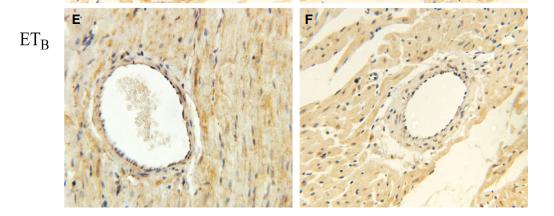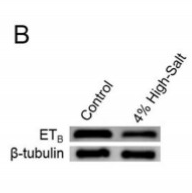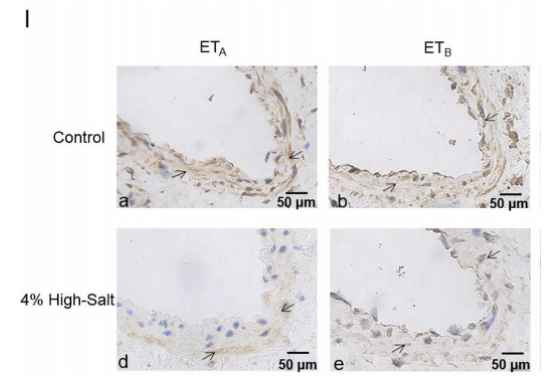EDNRB Antibody - #DF7104
| Product: | EDNRB Antibody |
| Catalog: | DF7104 |
| Description: | Rabbit polyclonal antibody to EDNRB |
| Application: | WB IHC IF/ICC |
| Cited expt.: | WB, IHC |
| Reactivity: | Human, Mouse, Rat |
| Prediction: | Pig, Bovine, Horse, Rabbit, Dog, Chicken |
| Mol.Wt.: | 50kDa; 50kD(Calculated). |
| Uniprot: | P24530 |
| RRID: | AB_2839059 |
Related Downloads
Protocols
Product Info
*The optimal dilutions should be determined by the end user. For optimal experimental results, antibody reuse is not recommended.
*Tips:
WB: For western blot detection of denatured protein samples. IHC: For immunohistochemical detection of paraffin sections (IHC-p) or frozen sections (IHC-f) of tissue samples. IF/ICC: For immunofluorescence detection of cell samples. ELISA(peptide): For ELISA detection of antigenic peptide.
Cite Format: Affinity Biosciences Cat# DF7104, RRID:AB_2839059.
Fold/Unfold
ABCDS; Ednra; EDNRB; EDNRB_HUMAN; Endothelin B receptor; Endothelin B receptor precursor; Endothelin receptor Non selective type; Endothelin receptor non-selective type; Endothelin receptor type B; ET B; ET-B; ET-BR; ETB; ETBR; ETRB; Hirschsprung disease 2; HSCR; HSCR2; OTTHUMP00000018534; OTTHUMP00000178736; WS4A;
Immunogens
A synthesized peptide derived from human EDNRB, corresponding to a region within C-terminal amino acids.
Expressed in placental stem villi vessels, but not in cultured placental villi smooth muscle cells.
- P24530 EDNRB_HUMAN:
- Protein BLAST With
- NCBI/
- ExPASy/
- Uniprot
MQPPPSLCGRALVALVLACGLSRIWGEERGFPPDRATPLLQTAEIMTPPTKTLWPKGSNASLARSLAPAEVPKGDRTAGSPPRTISPPPCQGPIEIKETFKYINTVVSCLVFVLGIIGNSTLLRIIYKNKCMRNGPNILIASLALGDLLHIVIDIPINVYKLLAEDWPFGAEMCKLVPFIQKASVGITVLSLCALSIDRYRAVASWSRIKGIGVPKWTAVEIVLIWVVSVVLAVPEAIGFDIITMDYKGSYLRICLLHPVQKTAFMQFYKTAKDWWLFSFYFCLPLAITAFFYTLMTCEMLRKKSGMQIALNDHLKQRREVAKTVFCLVLVFALCWLPLHLSRILKLTLYNQNDPNRCELLSFLLVLDYIGINMASLNSCINPIALYLVSKRFKNCFKSCLCCWCQSFEEKQSLEEKQSCLKFKANDHGYDNFRSSNKYSSS
Predictions
Score>80(red) has high confidence and is suggested to be used for WB detection. *The prediction model is mainly based on the alignment of immunogen sequences, the results are for reference only, not as the basis of quality assurance.
High(score>80) Medium(80>score>50) Low(score<50) No confidence
Research Backgrounds
Non-specific receptor for endothelin 1, 2, and 3. Mediates its action by association with G proteins that activate a phosphatidylinositol-calcium second messenger system.
Palmitoylation of Cys-402 was confirmed by the palmitoylation of Cys-402 in a deletion mutant lacking both Cys-403 and Cys-405.
Cell membrane>Multi-pass membrane protein.
Note: internalized after activation by endothelins.
Expressed in placental stem villi vessels, but not in cultured placental villi smooth muscle cells.
Belongs to the G-protein coupled receptor 1 family. Endothelin receptor subfamily. EDNRB sub-subfamily.
Research Fields
· Environmental Information Processing > Signal transduction > Calcium signaling pathway. (View pathway)
· Environmental Information Processing > Signal transduction > cGMP-PKG signaling pathway. (View pathway)
· Environmental Information Processing > Signaling molecules and interaction > Neuroactive ligand-receptor interaction.
· Human Diseases > Cancers: Overview > Pathways in cancer. (View pathway)
· Organismal Systems > Endocrine system > Melanogenesis.
· Organismal Systems > Endocrine system > Relaxin signaling pathway.
References
Application: WB Species: Rat Sample:
Application: IHC Species: Rat Sample:
Application: IHC Species: rat Sample: heart
Restrictive clause
Affinity Biosciences tests all products strictly. Citations are provided as a resource for additional applications that have not been validated by Affinity Biosciences. Please choose the appropriate format for each application and consult Materials and Methods sections for additional details about the use of any product in these publications.
For Research Use Only.
Not for use in diagnostic or therapeutic procedures. Not for resale. Not for distribution without written consent. Affinity Biosciences will not be held responsible for patent infringement or other violations that may occur with the use of our products. Affinity Biosciences, Affinity Biosciences Logo and all other trademarks are the property of Affinity Biosciences LTD.




